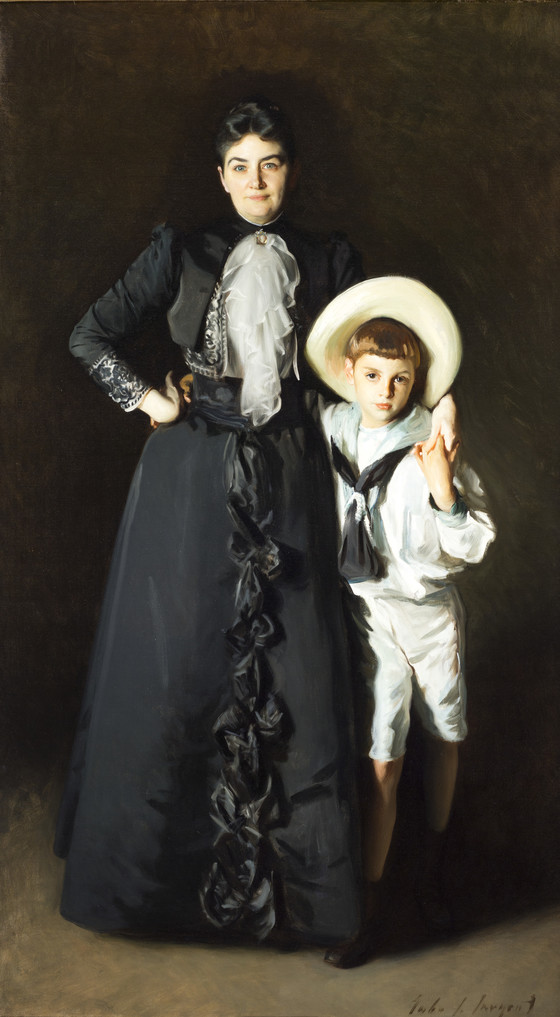In December 1889 Sargent returned to the United States, and, owing to his international fame, he was immediately deluged with requests for portraits by the best of New York and Boston society.
...
In December 1889 Sargent returned to the United States, and, owing to his international fame, he was immediately deluged with requests for portraits by the best of New York and Boston society.
Sargent spent the month of June 1890 in Worcester, Massachusetts, fulfilling a commission he had received several months earlier to paint the portrait of Mrs. Edward Livingston Davis. Maria Robbins Davis (1843-1916) came from a distinguished Boston family and, at the time of Sargent’s portrait, was one of Worcester’s most prominent women and the wife of a former mayor. The painting of Mrs. Davis with her son Livingston (1882-1932) was the most commanding and important of the portraits Sargent created in Worcester.
Sargent used the Davises’ stable for his studio because of its size and perhaps its empty black interior. In the portrait he avoided any allusions to the location and instead focused on the figures themselves, allowing their character and relationship to dominate. Sargent produced a complex psychological grouping in which the mother is contrasted with her child. Standing -- in the tradition of the formal, full-length portrait -- Mrs. Davis projects her upper-class breeding by her erect posture and frontal pose, yet she is also shown as a spirited woman and a mother of great warmth. While she and her son do not look at each other, they interact, albeit in a polite manner, through the tender grasp of hands and physical proximity The boy shyly leans toward his mother, and she responds by sheltering him with her left arm. In this and other family portraits Sargent masterfully avoided any sentimentality while sympathetically conveying his subjects’ personalities.
Sargent combined a dark palette with strong lighting, so that the overall effect is bright. Following the example of Carolus-Duran on close attention to values and the example of Spanish art, Sargent limited his palette largely to black and white while creating a colorful effect: there are subtle shifts from the cool blue-black of Mrs. Davis’s dress to the warmer brown, black of the background, and touches of light blues in the shadows of the boy’s sailor suit. Mrs. Davis and Her Son Livingston shows off Sargent’s vigorous, fluid brushwork, most notably in the ruffles, fichu, and embroidery of Mrs. Davis’s dress and the shadows of Livingston’s suit. Sargent combined his handling with an assured manipulation of dramatic lighting to firmly model the figures. He created a psychologically penetrating portrait as well as a technical tour-de-force.
Sargent’s emulation of Spanish baroque painting is echoed in the faintly Spanish features of the portrait’s original frame, designed by architect Stanford White.
More...



